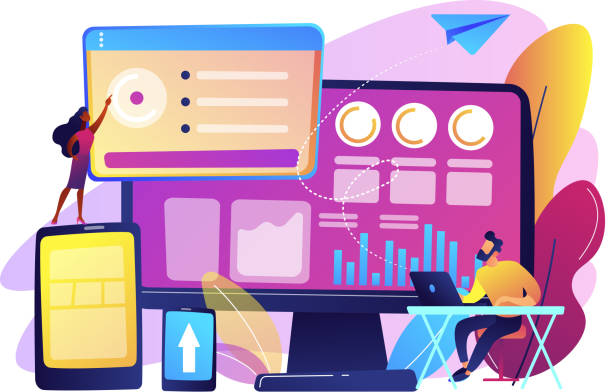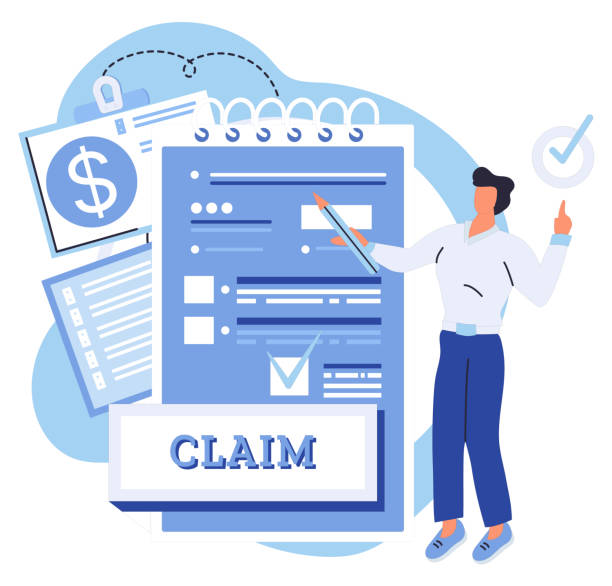An Introduction to Internal SEO and Its Importance
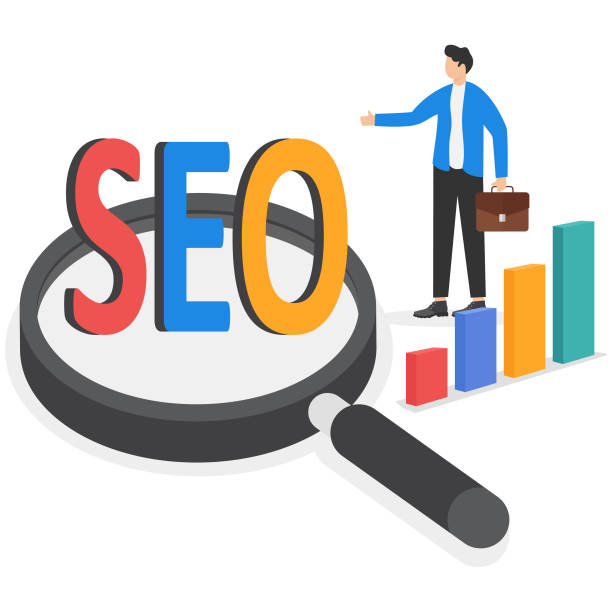
In today’s highly competitive world, an effective online presence isn’t achieved merely by having a beautiful website; rather, it requires smart strategies for your site to be seen amidst a flood of information.
Among these, #Internal_SEO or #On-Page_Optimization, plays a crucial role.
Internal SEO refers to a set of actions and techniques performed within your website to improve its ranking in search engine results.
These actions include optimizing content, site structure, HTML codes, and user experience.
Unlike external SEO, which focuses on link-building from other websites, internal SEO provides the webmaster full control over all optimization aspects.
The main goal of this process is to help search engines better understand the topic and structure of your pages so they can display them to relevant users.
This is a fundamental educational step for anyone serious about their online presence and increasing their organic site traffic.
The better search engines like Google understand your pages, the higher your chances of achieving top rankings for target keywords.
Internal optimization is the foundation of a successful SEO strategy, and without it, even the strongest external SEO campaigns cannot achieve desired results.
This section is, in fact, the backbone of any effort to be seen in the digital space.
Are you tired of your company’s website not meeting your expectations? Design a professional website with Rasawb that truly represents your business.
✅ Increased acquisition of new customers and sales leads
✅ Boosting your brand’s credibility and trust among your audience
⚡ Get a free website design consultation!
Keywords: The Cornerstone of Effective Internal SEO
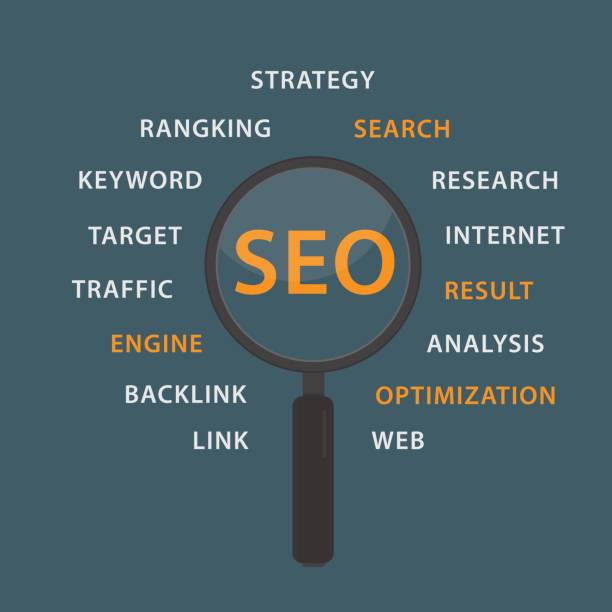
The correct selection and use of keywords is the first and most important step in an internal SEO strategy.
Keywords are the phrases users type into search engines to find information, products, or services.
The keyword research process involves identifying these phrases, analyzing their competitiveness, and their search volume.
Various tools like Google Keyword Planner, Ahrefs, and Semrush can assist you in this area.
After identifying target keywords, it’s important to use them naturally and purposefully in various sections of your page.
These sections include title tags, meta descriptions, headings (H1, H2, H3), URLs, the main content text, and even image file names.
Strictly avoid overfilling the page with keywords (Keyword Stuffing), as this will not only harm your ranking but may also lead to penalties from search engines.
Focusing on LSI (Latent Semantic Indexing) keywords or related semantic keywords is also highly important; these words help Google gain a deeper understanding of your content and recognize its semantic connection with various search queries.
Using keywords in a specialized and strategic manner ensures that your content is correctly targeted and attracts relevant audiences.
Each page should focus on one main keyword and a few secondary, related keywords to send clear signals to search engines.
Optimizing Title Tags and Meta Descriptions

The Title Tag and Meta Description are two vital elements in internal SEO that not only help search engines understand your page’s content but also play a significant role in encouraging users to click on your link in search results.
The title tag is the title displayed in the browser’s top bar and also as the main title in search results.
It should contain the page’s main keyword, be attractive and concise, and be a maximum of 50-60 characters to display fully.
The meta description is a summary of the page’s content that appears below the title tag in search results.
Although it doesn’t directly affect ranking, it has a significant impact on the click-through rate (CTR).
It should contain relevant keywords, be inviting and persuasive, and be between 150-160 characters.
Both elements should be unique for each page.
Using a CTA (Call to Action) in the meta description can increase the click-through rate.
Optimizing these two elements is the user’s first interaction with your site in search engines and can determine whether the user enters your site or not.
| Element | Good Example | Bad Example |
|---|---|---|
| Title Tag | Internal SEO Training 2024: Comprehensive Step-by-Step Guide | Internal SEO, optimization, ranking, SEO, website |
| Meta Description | Learn advanced internal SEO techniques with this comprehensive and practical guide and improve your site’s ranking in Google. | Internal SEO for all sites. Internal SEO is important. Internal SEO. |
| Optimal Length (Characters) | 50-60 for title, 150-160 for description | Too short or too long |
URL Structure and Site Information Architecture
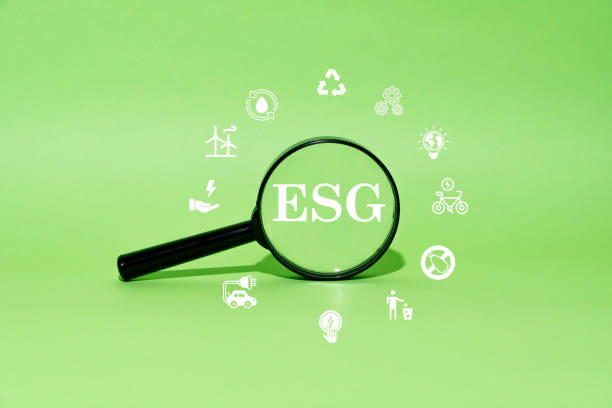
The URL structure of your pages and the overall information architecture of your website are key aspects of internal SEO that are often overlooked.
An optimized URL should be short, readable, and contain the page’s main keyword.
Using hyphens (-) to separate words and avoiding special characters, meaningless numbers, or long and complex strings are fundamental principles.
For example, a URL like `example.com/blog/seo-dakheli-guide` is much better than `example.com/blog/p?id=123&cat=456`.
Site information architecture refers to how your pages are organized and arranged; how pages are categorized, how they are linked to each other, and how easily users and search engine robots can navigate your site.
A hierarchical and logical structure that moves from the homepage to broader categories and then to more detailed pages not only improves user experience (UX) but also helps search engines understand the value and relevance of each page.
This is an important guideline to ensure effective crawling and indexing of your pages.
Correct internal linking, along with an XML sitemap, helps search robots discover all your important pages and transfer their value.
A strong website structure provides a solid foundation for SEO growth and prevents “Orphan Pages” (Orphan Pages)—pages that have no internal links pointing to them.
Are you tired of your e-commerce site having visitors but no sales? Rasawb solves your core problem by designing professional e-commerce websites!
✅ Significant sales increase with targeted design
✅ Flawless user experience for your customers
⚡ Get a free consultation!
Content Optimization for Internal SEO

Content is king; this statement holds entirely true in the world of internal SEO.
High-quality, valuable, and relevant content is the cornerstone of any successful SEO strategy.
To optimize content, you must first understand the needs and questions of your target audience and produce content that answers them.
Your content should be thought-provoking and at the same time explanatory.
Using appropriate headings (H1 for the main title, H2 for main headings, H3 for sub-sections) not only increases readability for users but also helps search engines identify the structure and main topics of your content.
Content length also matters; comprehensive and in-depth content that fully covers a topic generally performs better.
Furthermore, the natural use of primary and LSI keywords throughout the text sends stronger signals to search engines.
Content readability is also crucial; short sentences and paragraphs, the use of lists, images, and videos all contribute to improving user experience and, consequently, SEO ranking.
Providing fresh and up-to-date information, as well as creating evergreen content that remains relevant for a long time, are other important principles.
Your content should not only be optimized for search engines but also be engaging, useful, and practical for humans, encouraging users to spend more time on your site and interact more.
These interactions send positive signals to search engines.
The Role of Images and Videos in Internal SEO
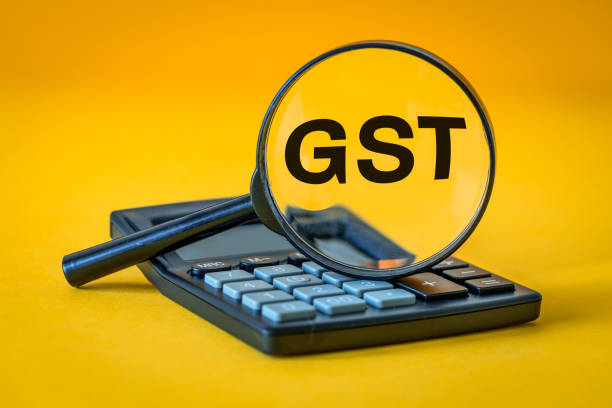
In today’s world, where visual content reigns supreme, optimizing images and videos is an integral part of internal SEO.
Images and videos not only enhance the visual appeal of your pages and improve user experience but can also be important sources for attracting traffic from image and video searches.
For images, optimization involves several key steps: Firstly, compressing images to reduce their size without compromising quality, which helps with page loading speed.
Secondly, using descriptive and keyword-rich file names (e.g., `seo-dakheli-tutorial.jpg` instead of `IMG001.jpg`).
Thirdly, using Alt tags (alternative text) that provide a summary of the image’s content.
This text is crucial for search engines and users who cannot see the image (such as visually impaired users or if the image fails to load).
The Alt tag should include a relevant keyword but avoid keyword stuffing.
For videos, optimization includes creating a video sitemap, using keyword-rich titles and descriptions, and optimizing thumbnails.
Hosting videos on platforms like YouTube and then embedding them on your site can help increase views and social signals.
Additionally, adding subtitles and transcripts to videos enhances their accessibility and crawlability for search engines.
By optimizing visual content, you not only improve user experience but also create new opportunities to be seen in search results.
Site Loading Speed and User Experience
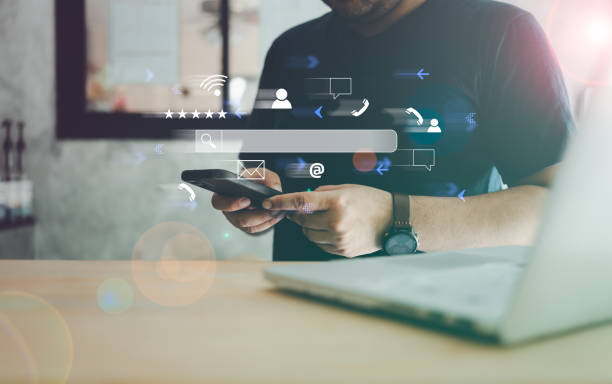
Page Speed and User Experience (UX) are two very important factors in internal SEO that Google places significant emphasis on.
A slow-loading site not only frustrates users and causes them to exit quickly (increasing bounce rate) but also receives a lower ranking from search engines.
Core Web Vitals are a set of Google’s metrics for measuring user experience, which include LCP (Largest Contentful Paint) for measuring the loading time of the largest visual element, FID (First Input Delay) for measuring the site’s responsiveness to the first user interaction, and CLS (Cumulative Layout Shift) for measuring the visual stability of the page.
To improve loading speed, you can take actions such as optimizing images, compressing codes (HTML, CSS, JavaScript), using browser caching, utilizing a Content Delivery Network (CDN), and choosing a high-quality hosting provider.
Your site must be fully responsive, meaning it displays correctly and provides a consistent user experience across all devices, from desktops to mobiles and tablets.
Easy navigation, attractive visual design, and providing clear and useful information are also parts of the user experience.
A fast site with optimized UX not only improves your SEO ranking but also increases user satisfaction and helps achieve your business goals.
This is an analytical approach to improving overall site performance.
| Tool | Capabilities | Main Use |
|---|---|---|
| Google PageSpeed Insights | Speed analysis for mobile and desktop, optimization suggestions | Measuring Core Web Vitals and providing technical solutions |
| Google Search Console | Core Web Vitals report for indexed pages | Long-term site performance monitoring, identifying general issues |
| GTmetrix | Scoring, Waterfall chart display, corrective suggestions | Detailed performance analysis, showing slow-loading resources |
| Pingdom Tools | Displays loading time, page size, number of requests | Checking speed from various global locations, network performance analysis |
Internal Linking and Navigation Improvement
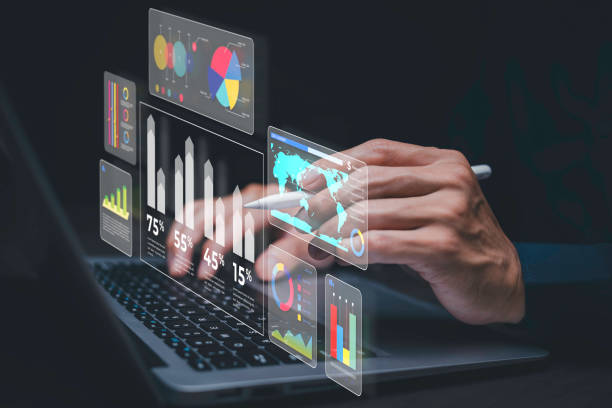
Internal Linking is one of the most powerful internal SEO tools for improving site ranking and navigation.
Internal links are links that point from one page within your domain to another page within the same domain.
These links have several vital functions: Firstly, they help search engines discover and crawl your pages and understand the connections between them.
Secondly, they distribute “Link Equity” or “PageRank” throughout your site, giving more power to your more important pages.
Thirdly, they improve user experience, allowing users to easily navigate between related pages and discover more information.
When internal linking, using descriptive and keyword-rich Anchor Text is crucial.
For example, instead of “Click here”, use “Comprehensive Internal SEO Guide”.
Ensure that links appear natural and are placed in logical positions within the text.
Each page should link to other relevant pages on your site, and your more important pages should receive more internal links from other pages.
Using Breadcrumbs and clear navigation menus also aids internal linking and improves user experience.
These methods not only help search engines better understand the site structure but also assist in spreading news about your new or updated content throughout the site.
A smart internal linking strategy boosts the power of your pages and keeps users on your site longer.
Is your current e-commerce site design causing you to lose customers and sales?
Rasawb is your solution with modern, user-friendly e-commerce website designs!
✅ Significant increase in conversion rates and sales
✅ Strong branding and building customer trust
⚡ Get a free e-commerce website design consultation from Rasawb!
Reviewing and Analyzing Internal SEO Performance
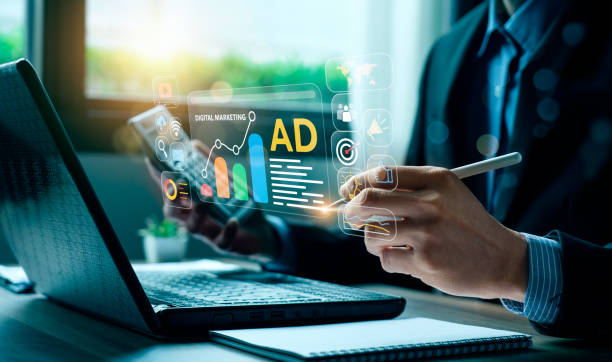
After implementing internal SEO strategies, the next crucial step is to review and analyze their performance.
Without continuous monitoring and analysis, you cannot understand which actions have been successful and which need improvement.
Many free and paid tools are available for this purpose, among the most important of which are Google Analytics and Google Search Console.
Google Analytics allows you to track site traffic, acquisition channels, user behavior (such as bounce rate, session duration), and conversions.
Using this information, you can discover user behavior patterns and identify your site’s weaknesses.
Google Search Console is a tool that helps you understand how Google interacts with your site.
This tool provides information about the keywords your site ranks for, popular pages, crawling issues, indexing, and Core Web Vitals.
In addition to these tools, you can use third-party tools like Ahrefs, Semrush, or Moz to track keyword rankings, analyze competitors, and identify new opportunities.
Performing a precise and regular analysis allows you to adjust your strategies based on real data and continuously improve your internal SEO performance.
Observing organic traffic growth and increased keyword rankings can be very engaging and motivating, indicating the success of your internal optimization efforts.
This process is a continuous cycle of implementation, measurement, analysis, and improvement.
Common Mistakes in Internal SEO and Avoidance Strategies
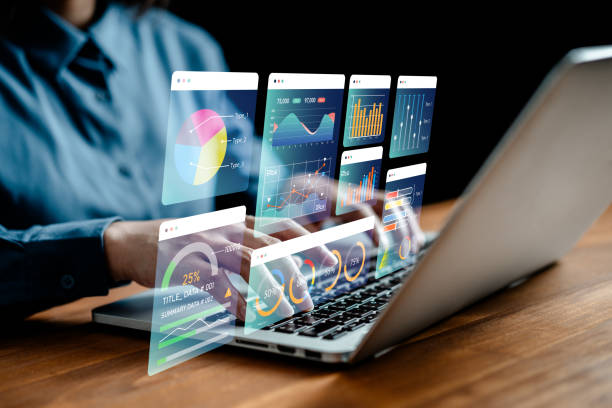
On the path of internal SEO, making mistakes can render your efforts fruitless or even harm your site’s ranking.
Understanding these mistakes and strategies to avoid them is essential for long-term success.
One of the most common mistakes is “Keyword Stuffing” or overfilling content with keywords.
This not only results in penalties from Google but also diminishes user experience.
The solution is to use keywords naturally and meaningfully within the text.
Another mistake is “Duplicate Content”; having identical or very similar content on multiple pages can confuse Google during indexing.
To resolve this issue, use `canonical` tags or remove/merge duplicate content.
Ignoring “mobile optimization” is also a major error, as most searches today are conducted via mobile devices.
Ensuring responsive design and appropriate mobile loading speed is crucial.
Not using “heading tags” (H1, H2, H3) or using them incorrectly does not help search engines and users understand the content structure.
Also, not optimizing images (high size, no Alt tag) can harm site speed and image SEO.
The absence of “internal linking” or poor linking prevents the distribution of link equity and easy navigation.
Finally, neglecting “analysis” and not tracking SEO performance are also common mistakes.
By avoiding these errors and correctly implementing the principles of internal SEO, you can benefit from a sustainable and effective optimization strategy and significantly increase your site’s organic traffic.
Frequently Asked Questions
| Question | Answer |
|---|---|
| What is a Meta Title and why is it important in internal SEO? | The meta title is the most important internal SEO element displayed at the top of the browser tab and in search results. It helps search engines and users understand the main topic of the page and should include the main keyword. |
| What role does the Meta Description play in internal SEO? | The meta description is a short summary of the page’s content displayed under the title in search results. Although it doesn’t directly affect ranking, its attractiveness can increase the click-through rate (CTR). |
| How should keywords be used in page content? | Keywords should be used naturally and relevantly in strategic locations such as the title, headings, first paragraph, and body text. Avoid excessive keyword stuffing. |
| What is the importance of high-quality and comprehensive content in internal SEO? | High-quality, unique, informative, and comprehensive content that addresses user needs is of high importance. Search engines give higher rankings to content that creates real value. |
| What is the purpose of heading tags (H1-H6) in internal SEO structure? | Heading tags (H1, H2, H3, etc.) are used to structure content and indicate the importance of different sections. H1 is the main title of the page, and each page should only have one H1. Other tags are used for subheadings. |
| How to optimize images for improved internal SEO? | To optimize images, use descriptive Alt Text that includes relevant keywords, reduce the image file size without compromising quality, and use meaningful and relevant file names. |
| What characteristics does an SEO-friendly URL have for internal SEO? | An SEO-friendly URL should be short, readable, descriptive, include main keywords, and be free of extra characters. The URL structure should be hierarchical and logical to be understandable for both users and search engines. |
| How does Internal Linking help internal SEO? | Internal linking, by connecting related pages, helps users and search engine crawlers better understand the site’s structure, transfers page authority, and increases user time on the site. |
| What is the effect of page loading speed on internal SEO? | High loading speed is crucial for both user experience and SEO ranking. Slower pages may be ignored by search engines and lead to an increased bounce rate. |
| Why is Mobile-Friendliness very important in internal SEO? | Given the increasing number of searches through mobile devices, having a responsive and mobile-friendly site is very essential for user experience and ranking in search results (Google’s mobile-first indexing). |
And other services of Rasawb Advertising Agency in the field of advertising
Smart Reportage: Professional optimization to increase click-through rates using real data.
Smart Content Strategy: Professional optimization for campaign management using attractive UI design.
Smart Sales Automation: A fast and efficient solution for increasing click-through rates with a focus on attractive UI design.
Smart Marketplace: A professional solution for improving SEO ranking with a focus on custom programming.
Smart Sales Automation: An innovative service to increase click-through rates through marketing automation.
And over a hundred other services in the field of internet advertising, advertising consultation, and organizational solutions
Internet Advertising | Advertising Strategy | Advertorial
Sources
Complete Guide to Internal SEO
Key On-Page SEO Tips
Google SEO Ranking Factors
Effective Internal Linking Strategy
? Ready for your business to leap forward in the digital world? Rasawb Afarin Digital Marketing Agency, by offering innovative solutions in user-friendly website design, search engine optimization (SEO), and targeted advertising campaigns, is your strategic partner on the path to reaching the pinnacle. Let’s build your business’s digital future together.
📍 Tehran, Mirdamad Street, next to Bank Markazi, Kazerun Jonoubi Alley, Ramin Alley, No. 6


